 24-26 April 2019, Rabat, Morocco. First International Experts
24-26 April 2019, Rabat, Morocco. First International Experts Workshop on Pre-breeding Utilizing Crop Wild Relatives (1st PBCWR).
Using crop wild relatives (CWR) in crop improvement is much more difficult than breeding with domesticated varieties.
 |
| The @CropTrust’s Director of Science, Luigi Guarino (@AgroBioDiverse) |
Pre-breeding aims to isolate desired genetic traits (e.g. disease resistance) from unadapted material like CWR and introduce them into breeding lines that are more readily crossable with modern, elite varieties.Pre-breeding broadens the elite genepool by re-capturing lost beneficial genetic diversity.
ICARDA plays a crucial role in conserving dryland agrobiodiversity. It holds in-trust more than 157,000 accessions in the three genebanks in Lebanon, Morocco and Syria
welcomes delegates
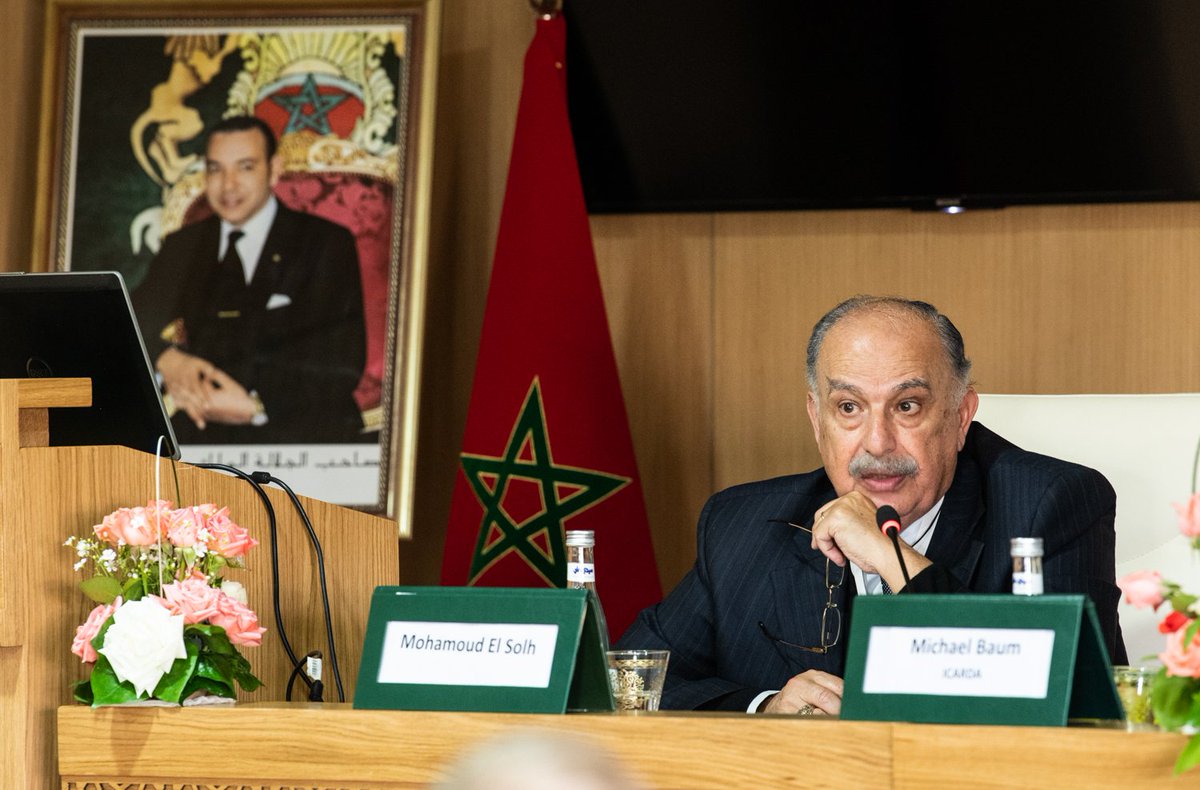 |
| Dr Mahmoud El-Solh, former Director General of @ICARDA and Advisory Group member of the @CropWildRelativ Project chaired the opening session |
Session 1: Opening lectures
- Mohamed Sadiki (MoA), Jacques Wery (ICARDA), Faouzi Bekkaoui (INRA-Morocco), Luigi Guarino (GCDT), Daniel van Gilst (NORAD)
- Bikram Gill: Towards a Futuristic Elite Crop-CWR Germplasm Enhancement Program
- Ahmed Amri (see picture): Promoting in situ/ ex situ conservation linkages of crop wild relatives of cereals and legumes
- Chris Cockel: The role of botanic gardens in collecting and conserving crop wild relatives + CWR initiative
- Julian Ramirez: Approaches for gap analysis for landraces and crop wild relatives
- Vania Azevedo: Conservation of tropical dryland food legumes and cereals genetic resources
- Zakaria Kehel: Targeting adaptive traits in ex situ collections and in situ natural habitats
- Alain Tsobeng: Use of tree genetic resources for land restoration: Case study of Dacryodes edulis G. Don Lam (Burseraceae) in Cameroon.

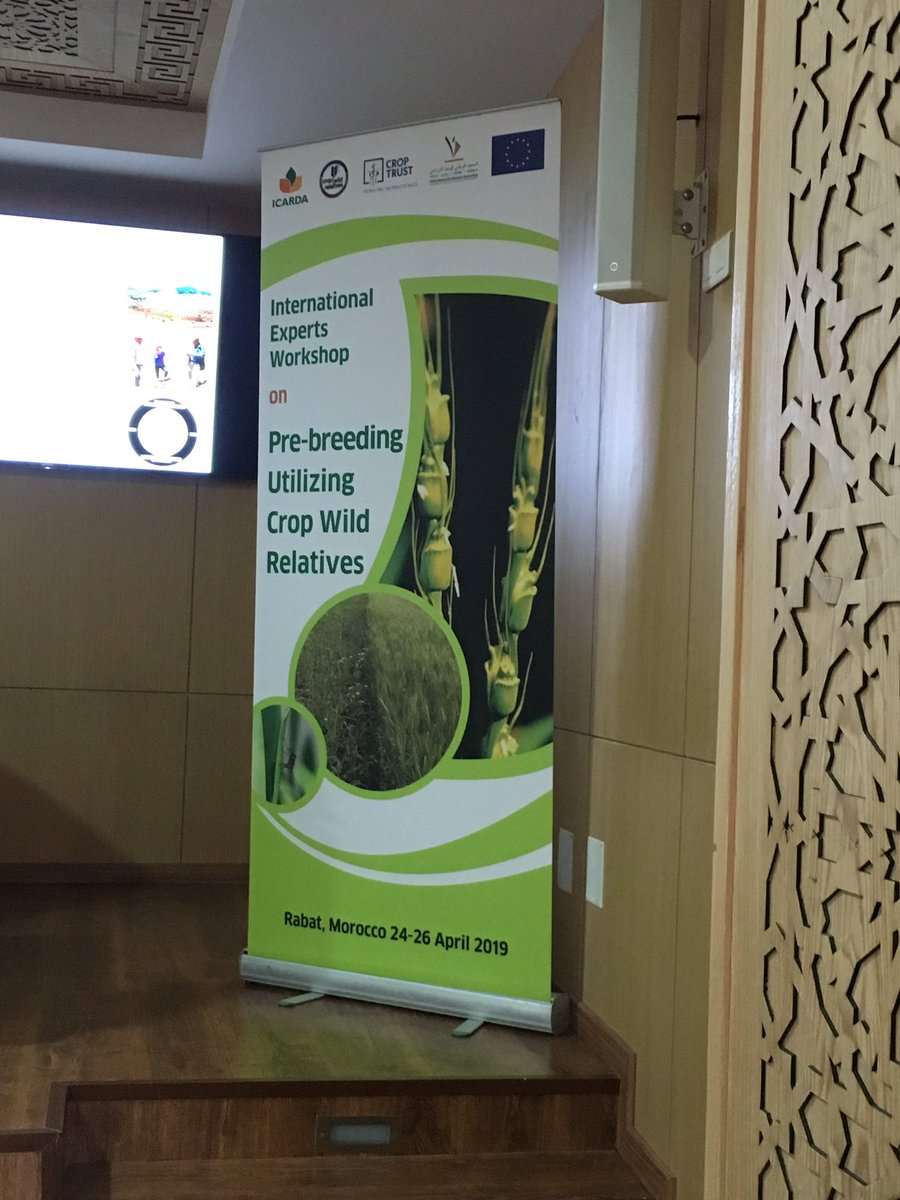
- Benjamin Kilian: Global efforts to explore the value of crop wild relatives
- Mona Schreiber: Glimpses of domestication history of cereal crops through genebank genomics
- Antonio Costa de Oliveira: Improving efficiency in the exploitation of genetic resources through molecular techniques
- Mustapha El-Bouhssini: Evaluation of wild relatives and pre-breeding germplasm for resistance to major insects and diseases
- Hisashi Tsujimoto: Can we find abiotic stress tolerance in wheat related-wild species? - Experiences and lessons learned in pre-breeding of wheat with drought and heat stress tolerance
- Carla Ceoloni: Chromosome engineering to leverage alien genetic variation and make a better wheat in the face of current and future challenges

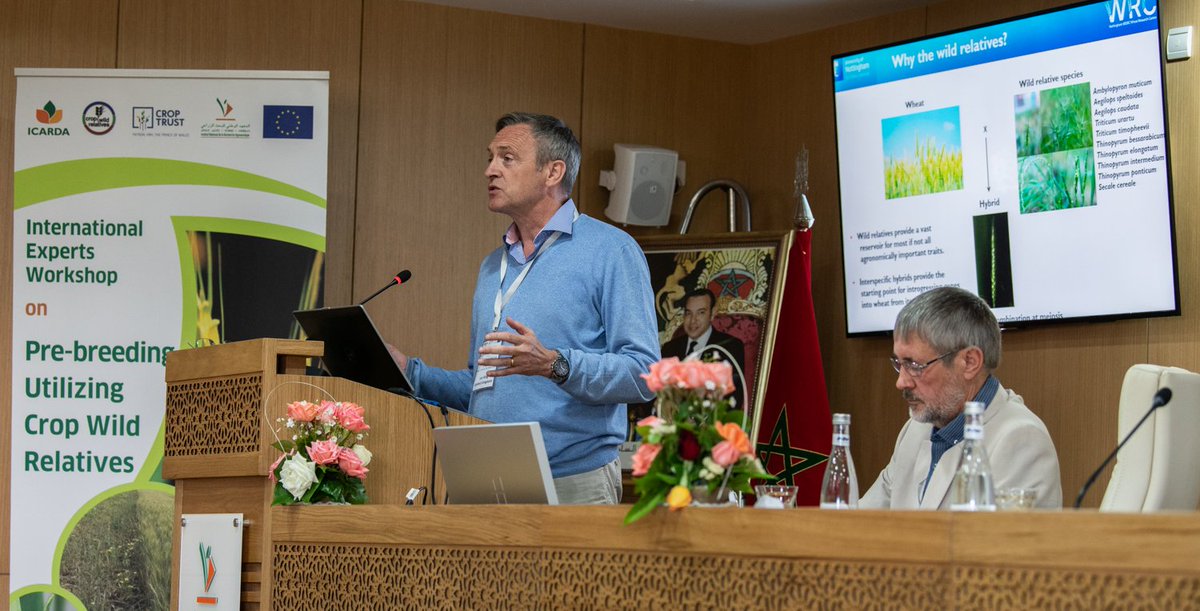 |
| Professor Ian King of the @UniofNottingham presented the research of his team on mobilizing useful genes from distant species of wheat |
- Kuldeep Singh: Plant Genetic Resources Management and Pre-Breeding in Genomics Era
- Verma Ramesh: Excellence in pre-breeding efforts in barley
- Izzat Taher: Pre-breeding and breeding efforts for heat tolerance in cereals and legumes
- Shiv Kumar: Pre-breeding efforts in lentil, chickpea and grass pea
- Shivali Sharma: Utilizing the underutilized CWR: Pigeonpea pre-breeding from discovery to delivery
- Christian Fatokun: Utilizing the underutilized CWR: cowpea
 |
| Zakaria Kehel of @ICARDA on targeting novel diversity in genetic resources |
Download CWR Pre-breeding Flyer
Pre-breeding Utilizing Crop Wild Relatives.
The initial phase of the initiative involves 19 projects focussed on creating new pre-bred materials derived from crop wild relatives.
In the current phase (2017-2020), the focus is on expanding the pre-breeding work and evaluating germplasm derived from CWRs. Newly developed pre-bred lines are being evaluated under field conditions in target environments with breeders and farmers. The project integrates promising materials into the breeding pipelines. Evaluation projects for 13 crops are supported.
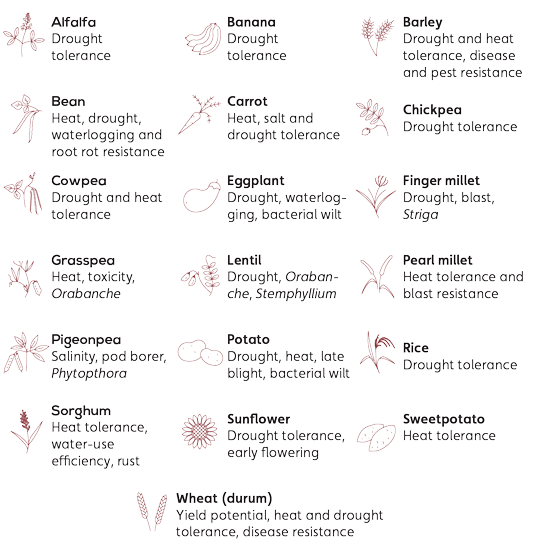 The two phases of the initiative together involve nearly 100 national and international partners in 48 countries. All projects have strong capacity-building elements and always involve research partners in a CGIAR center or a university, as well as national partners in the developing world.
The two phases of the initiative together involve nearly 100 national and international partners in 48 countries. All projects have strong capacity-building elements and always involve research partners in a CGIAR center or a university, as well as national partners in the developing world.All key germplasm material produced will be made available to users with the standard material transfer agreement (SMTA) under the International Treaty for Plant Genetic Resources for Food and Agriculture.
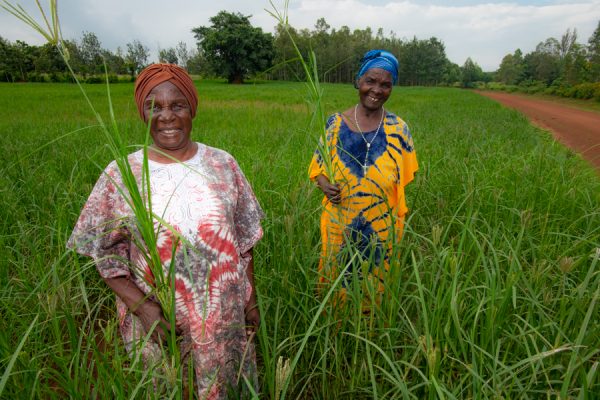 Related:
The women finger millet advocates of Western Kenya
Related:
The women finger millet advocates of Western KenyaWomen in Kakamega and Busia counties of Western Kenya are going against the grain. They are turning their backs on the commonly planted grains of sorghum and maize and on commercial sugarcane, and replacing them with a grain that not only better meets the nutritional needs of the family but also fulfils economic and agronomic requirements in a time of climate change.
The women are planting finger millet. Finger millet hardly needs
an introduction in Western Kenya. The crop is native to the highlands of Kenya, Uganda and Ethiopia and has been widely grown traditionally in Eastern and Southern Africa and South Asia for hundreds of years. It is now considered a minor crop in many of these areas. But perhaps not for long, according to the women who grow it and a woman who works to improve it.
ICRISAT’s Dr. Damaris Odeny is the principal investigator of a five-year finger millet pre-breeding project and focuses on genotyping finger millet samples. [Photo: Michael Major/Crop Trust]


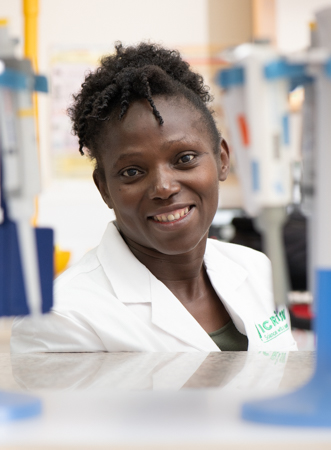
No comments:
Post a Comment